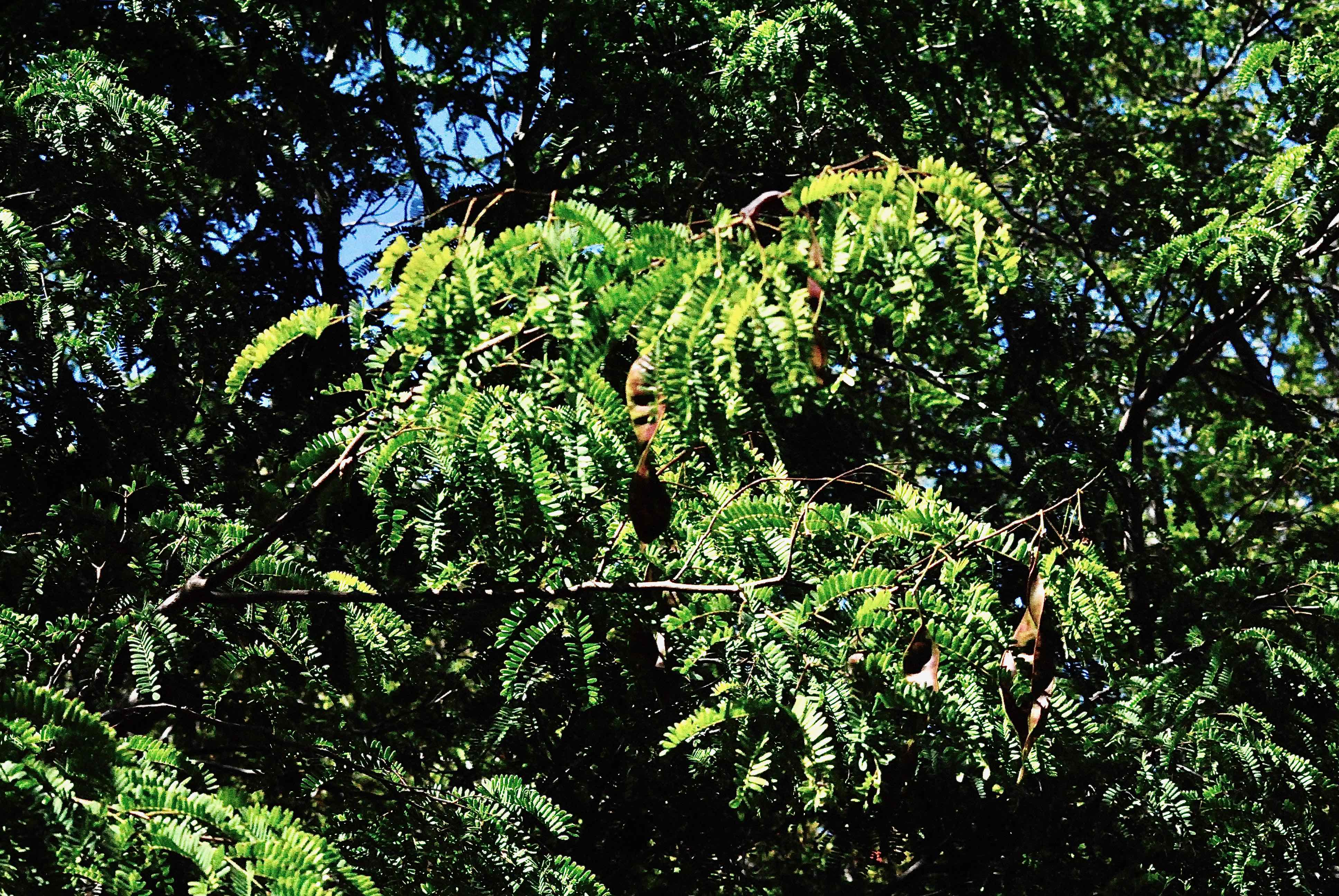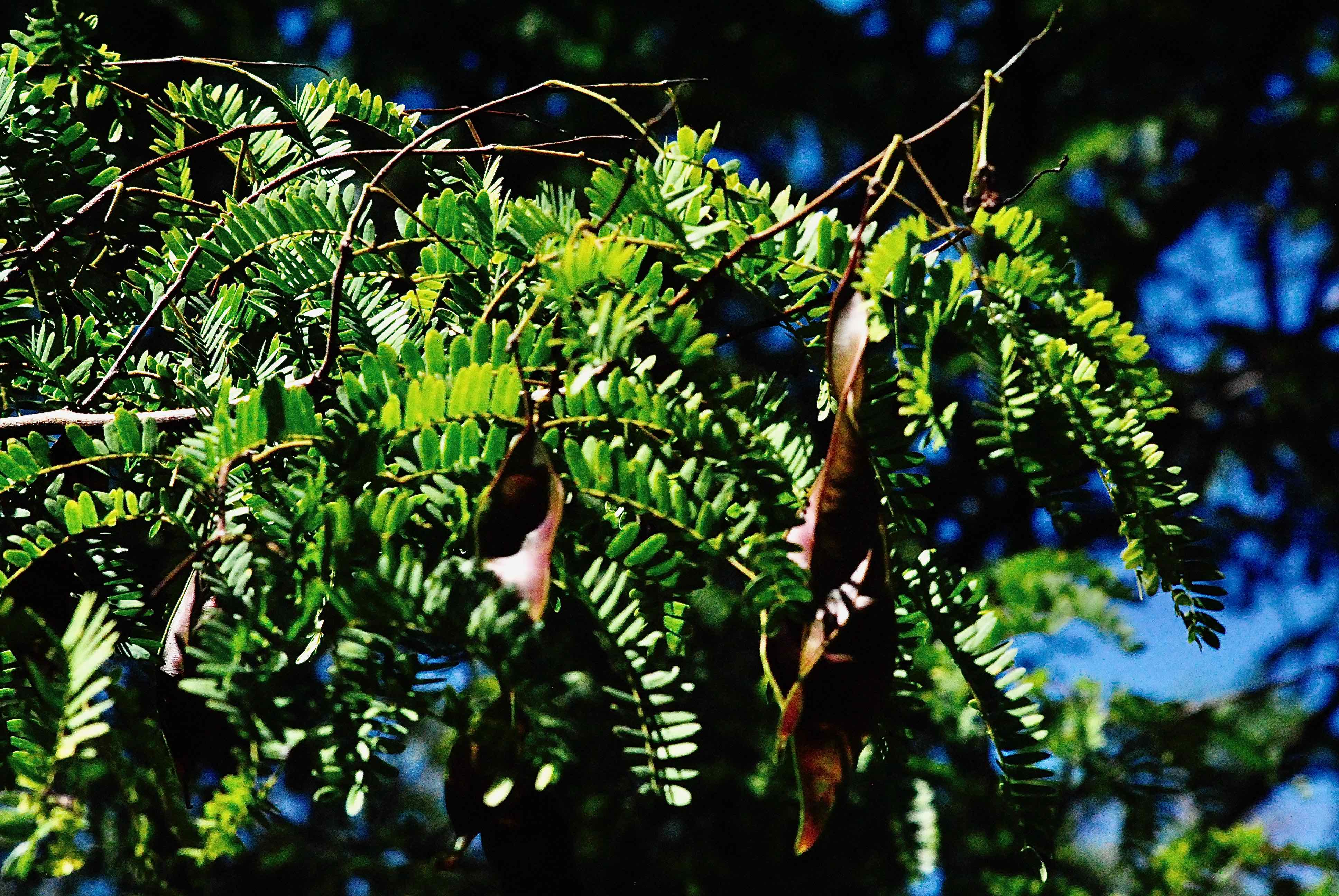
Wild tamarind, photographed at Oleta River State Park, North Miami, Miami-Dade County, in May 2014.
There is tamarind and then there is wild tamarind.
The first is one of the most important trees in the world, from a human point of view. The second is a Florida native that has less significance globally but does have a niche in the natural scheme of things in the Sunshine State and beyond..
Both tamarinds share somewhat similar looks, with compound leaves and fairly large seed pods, and both are members of the pea family, Fabaceae. But our focus here is on wild tamarind aka Lysiloma latisiliquum. Want to know more about the other tamarind, click here to check out our page.
As noted above, wild tamarind is a Florida native, found in the southern end of the Peninsula, including Lee, Collier, Miami-Dade and Monroe counties. Some distribution maps include Indian River County as well.
Wild tamarind’s native range extends southward through the Caribbean, Mexico and Central America.
It is a fairly large tree, growing between 30 and 60 feet tall or more, with a spread of about 50 feet. The trunk is slender and on the shorter side, but the trunk on older trees can be as thick as three-feet. It also tends to develop multiple trunks.
The branches on wild tamarind tend to be long and arching over. With the relatively thin trunk, they create an umbrella-like appearance. In certain landscape settings, the branches need to be trimmed to allow pedestrians and cars to pass underneath.
Its pinnate compound leaves are arranged alternately along the stem. Leaflets are oval-shaped and entire, meaning they have no serrations along the edges, nor do they have lobes.
Wild tamarind is considered to be semi-deciduous, because it can drop its leaves in northern portions of its range. Farther south, tamarind remains green throughout the year.
The flowerheads are white, puffy clusters containing numerous small, individual flowers. The clusters aren’t particularly attractive but they do give off a bit of a scent. Bloom time is spring into fall. The flowers give way to flat, sometimes twisted, pods each about three to six inches long that go from green to brown when ripe.
Favorite habitats include tropical rocklands and pine rocklands and disturbed areas.
Unlike its cousin tamarind, the seeds of wild tamarind aren’t all that tasty for us humans, nor do they apparently have much appeal for wildlife either.
The tree does attract its share of bugs, which in turn, attracts a number of hungry birds. The mimosa yellow, cassius blue, and Orange sulphur butterflies use wild tamarind as a host plant for their caterpillars. Other butterflies and bees are attracted to the aromatic flowers, where they feed on the nectar.
Wild tamarind is often used as a shade tree. It’s also used in a variety of settings, in median strips, in parking lot islands and as street tree. Its roots usually don’t create problems with hard scapes.
It takes to full sun or part-shade and does well in nutrient-poor soils — it is a legume, after all, and is able to fix atmospheric nitrogen to the soil with the help of some bacteria friends.
Wild tamarind is strong, resistant to breakage, an important feature in hurricane alley. It’s also fairly salt resistant, but it does not tolerate freezing temperatures, which limits its northern range.
Note: There is a tree found in South Florida sometimes called wild tamarind but it is a non-native and better known as lead tree, Leucaena diversifolia, which is an invasive. Unfortunately, wild tamarind is sometimes misidentified as lead tree and mistakenly cut down.
Other common names include false tamarind, Cuban tamarind, Bahama lysiloma and sometimes spelled wild-tamarind. It is a member of Fabaceae, the pea family.
Oleta River State Park



